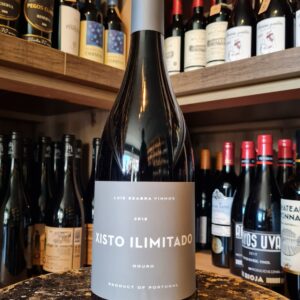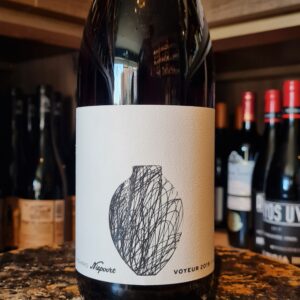-
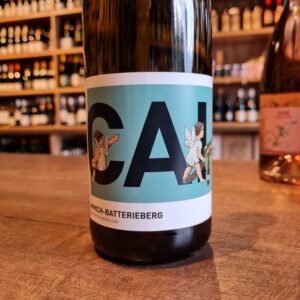 Immich-Batterieberg is one of the oldest wineries in the Mosel; originally founded by a Carolingian monastery, it can be traced back to the year 911. In 1495, the Immich family purchased the property, producing traditional dry and off-dry wines under their name for almost 500 years. The historical estate was then acquired in 2009 by Gernot Kollmann, one of Germany's finest up and comers. He is no stranger to the Mosel, having worked on many prestigious wineries in the region – Dr. Loosen, Weingut Van Volxem and Knebel. Since taking over, he has chosen to retain the long-standing tradition of the winery. The wines are once again produced in a dry or off-dry style, with sugar levels depending on each site, each vintage.80-percent of the vines are un-grafted and over 60 years old, and everything is worked organically. Intervention during vinification is also forbidden. A crisp, crunchy, keenly balanced, TOTALLY DRY trocken style Riesling.
Immich-Batterieberg is one of the oldest wineries in the Mosel; originally founded by a Carolingian monastery, it can be traced back to the year 911. In 1495, the Immich family purchased the property, producing traditional dry and off-dry wines under their name for almost 500 years. The historical estate was then acquired in 2009 by Gernot Kollmann, one of Germany's finest up and comers. He is no stranger to the Mosel, having worked on many prestigious wineries in the region – Dr. Loosen, Weingut Van Volxem and Knebel. Since taking over, he has chosen to retain the long-standing tradition of the winery. The wines are once again produced in a dry or off-dry style, with sugar levels depending on each site, each vintage.80-percent of the vines are un-grafted and over 60 years old, and everything is worked organically. Intervention during vinification is also forbidden. A crisp, crunchy, keenly balanced, TOTALLY DRY trocken style Riesling. -
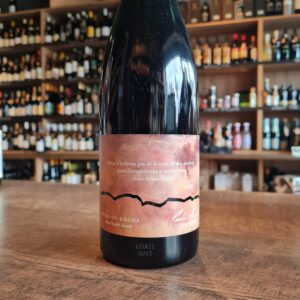 Vincent Rochette comes from a long line of grape growers rather than winemakers. In 1998, he bucked that trend by investing in a cellar and the necessary equipment to allow him to vinify his own grapes, which for five generations had been sold to other winemakers in the area. Vincent is an ardent believer in the benefits of biodynamics, fully converting his estate to follow that philosophy in 2006. He uses only natural products in the vineyard and carries out all his work in keeping with the cosmic cycles of the earth, not only among the vines but also in the cellar. One of his most interesting cuvées is the Côte du Rhone ‘Nature’, which has had no sulphites added at any stage of the winemaking process. Due to the fact that sulphites are naturally present in grapes, there are still 9mg present (below the legal 10mg limit which is required to state that the wine contains sulphites). The result is a wine that is simply a pure expression of Grenache and Syrah. Harvesting, racking and bottling are all carried out in accordance with cosmic rhythms. A delicious wine to consume today, with grills, summer salads, spicy dishes such as couscous, a tagine with candied fruits (apricots, lemons, onions, etc.)
Vincent Rochette comes from a long line of grape growers rather than winemakers. In 1998, he bucked that trend by investing in a cellar and the necessary equipment to allow him to vinify his own grapes, which for five generations had been sold to other winemakers in the area. Vincent is an ardent believer in the benefits of biodynamics, fully converting his estate to follow that philosophy in 2006. He uses only natural products in the vineyard and carries out all his work in keeping with the cosmic cycles of the earth, not only among the vines but also in the cellar. One of his most interesting cuvées is the Côte du Rhone ‘Nature’, which has had no sulphites added at any stage of the winemaking process. Due to the fact that sulphites are naturally present in grapes, there are still 9mg present (below the legal 10mg limit which is required to state that the wine contains sulphites). The result is a wine that is simply a pure expression of Grenache and Syrah. Harvesting, racking and bottling are all carried out in accordance with cosmic rhythms. A delicious wine to consume today, with grills, summer salads, spicy dishes such as couscous, a tagine with candied fruits (apricots, lemons, onions, etc.) -
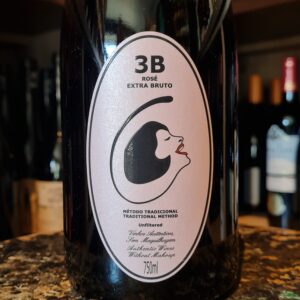 The Filipa Pato 3B Sparkling Rosé is a delicious treat of a wine from one of my favorite winemakers in Portugal. Filipa Pato is the daughter of arguably one of Portugal's most famous winemakers, Luis Pato. Passion for the traditional indigenous grape varietals of Bairrada led Filipa Pato to start her own project in 2001. She works a total of 12 hectares of vineyards scattered in various plots throughout the Bairrada appellation of Portugal. Utilizing biodynamic farming practices and minimal-intervention winemaking. The 3B is a homage to the traditional sparkling wines of Bairrada, with this being a blend of the indigenous Baga and Bical grapes. The Bical adds mineral and citrus notes to the berry red fruit notes of the Baga. This is a great little sparkler with a dry finish. Filipa and her husband, Belgian sommelier and restaurateur William Wouters, produce vinhos autênticos sem maquilagem – 'Authentic Wines Without Makeup.' 3B's-Bairrada, Baga & Bical
The Filipa Pato 3B Sparkling Rosé is a delicious treat of a wine from one of my favorite winemakers in Portugal. Filipa Pato is the daughter of arguably one of Portugal's most famous winemakers, Luis Pato. Passion for the traditional indigenous grape varietals of Bairrada led Filipa Pato to start her own project in 2001. She works a total of 12 hectares of vineyards scattered in various plots throughout the Bairrada appellation of Portugal. Utilizing biodynamic farming practices and minimal-intervention winemaking. The 3B is a homage to the traditional sparkling wines of Bairrada, with this being a blend of the indigenous Baga and Bical grapes. The Bical adds mineral and citrus notes to the berry red fruit notes of the Baga. This is a great little sparkler with a dry finish. Filipa and her husband, Belgian sommelier and restaurateur William Wouters, produce vinhos autênticos sem maquilagem – 'Authentic Wines Without Makeup.' 3B's-Bairrada, Baga & Bical -
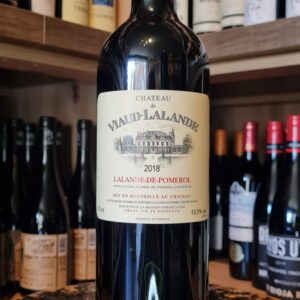 Chateau Viaud Lalande is a small-scale venture of the Durand – Teyssier family who have been making wine in the village of Puisseguin, appellation of Lalande de Pomerol, for three generations. 1.5 hectares of vineyards adjoining the Chateau were planted by Philippe Durand – Teyssier back in the 60’s. Typically for the region, those are mostly Merlot and Cabernet Franc well suited to the local, clay dominated soils. Since 2007 Philippe has handed over the wine making and day-to-day running of the property to his son Thomas. Having previously worked in prominent 1er and Grand Cru Classé estates in Saint Emilion (Château Belair, Château Cadet Bon), Thomas is continuing family tradition, with clear focus on quality. Annual production: 9000 bottles.
Chateau Viaud Lalande is a small-scale venture of the Durand – Teyssier family who have been making wine in the village of Puisseguin, appellation of Lalande de Pomerol, for three generations. 1.5 hectares of vineyards adjoining the Chateau were planted by Philippe Durand – Teyssier back in the 60’s. Typically for the region, those are mostly Merlot and Cabernet Franc well suited to the local, clay dominated soils. Since 2007 Philippe has handed over the wine making and day-to-day running of the property to his son Thomas. Having previously worked in prominent 1er and Grand Cru Classé estates in Saint Emilion (Château Belair, Château Cadet Bon), Thomas is continuing family tradition, with clear focus on quality. Annual production: 9000 bottles. -
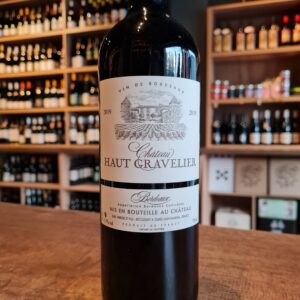 Located within the AOC Bordeaux, the Vignoble de Gravelierhas 32 Ha of vines with an average age of 20 years. It is located on hillsides thus benefiting from a beautiful sunshine. The harvest is harvested at perfect maturity and vinified using the traditional method in stainless steel vats and aged in cement vats. The grape variety of the vineyard is composed of 75% Merlot and 25% Cabernet-Sauvignon. To present a quality wine, the yields and phytosanitary treatments are moderate. The foliage is kept as high as possible to obtain better maturity. With deep colour, classic structure and unusually ripe flavours, this is classic claret to serve with roast beef, duck or T-bone steak. A gourmet Bordeaux!
Located within the AOC Bordeaux, the Vignoble de Gravelierhas 32 Ha of vines with an average age of 20 years. It is located on hillsides thus benefiting from a beautiful sunshine. The harvest is harvested at perfect maturity and vinified using the traditional method in stainless steel vats and aged in cement vats. The grape variety of the vineyard is composed of 75% Merlot and 25% Cabernet-Sauvignon. To present a quality wine, the yields and phytosanitary treatments are moderate. The foliage is kept as high as possible to obtain better maturity. With deep colour, classic structure and unusually ripe flavours, this is classic claret to serve with roast beef, duck or T-bone steak. A gourmet Bordeaux! -
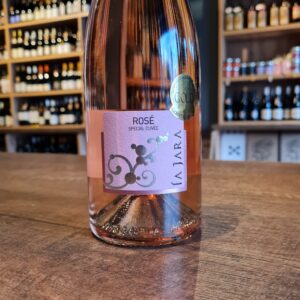 A totally irresistible semi-sparkling organic rosé from our favourite Prosecco producer La Jara, but in this case they use a little bit of the red grape Raboso, to give the wine its lovely pale coral colour. The nose is delicate and fruity, led by aromas of ripe strawberries and raspberries. The palate is fresh and tart, full of gooseberry and redcurrant notes. Try pairing this wine with risotto or pasta, or simply having it as an aperitif. Just for the fun of it, I leave you with a fun fact. The Italians call the string around the bottle a spago. It has no function other than that it looks nice. And that is exactly what makes it a real Italian wine. Beautiful on the inside and beautiful on the outside. A feast to watch and a feast to drink.
A totally irresistible semi-sparkling organic rosé from our favourite Prosecco producer La Jara, but in this case they use a little bit of the red grape Raboso, to give the wine its lovely pale coral colour. The nose is delicate and fruity, led by aromas of ripe strawberries and raspberries. The palate is fresh and tart, full of gooseberry and redcurrant notes. Try pairing this wine with risotto or pasta, or simply having it as an aperitif. Just for the fun of it, I leave you with a fun fact. The Italians call the string around the bottle a spago. It has no function other than that it looks nice. And that is exactly what makes it a real Italian wine. Beautiful on the inside and beautiful on the outside. A feast to watch and a feast to drink. -
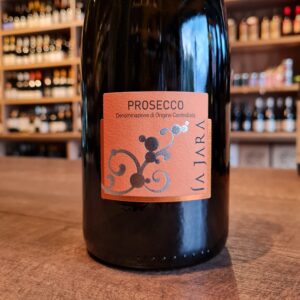 La Jara, based in the heart of Prosecco country just south of Conegliano, make a superb range of organic wines including some excellent Proseccos such as this. Being a frizzante it's got a soft sparkle and in some ways helps the fruit character stand out that bit more. With masses of fine bubbles and flavours of apple, peach, pear and ripe citrus fruits it's a very approachable style that's perhaps a bit too easy to drink. Certainly a step above a lot of other Proseccos. It's freshness makes it a great 'anytime' fizz. It's also really good alongside nibbles like olives, or tortilla chips and dips.
La Jara, based in the heart of Prosecco country just south of Conegliano, make a superb range of organic wines including some excellent Proseccos such as this. Being a frizzante it's got a soft sparkle and in some ways helps the fruit character stand out that bit more. With masses of fine bubbles and flavours of apple, peach, pear and ripe citrus fruits it's a very approachable style that's perhaps a bit too easy to drink. Certainly a step above a lot of other Proseccos. It's freshness makes it a great 'anytime' fizz. It's also really good alongside nibbles like olives, or tortilla chips and dips. -
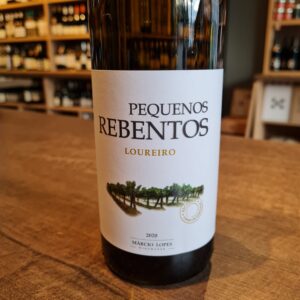 Márcio Lopes studied as an engineer, but cut his winemaking teeth working for two years with Vinho Verde master Anselmo Mendes in Melgaço. He then travelled to Australia where he made wine in Rutherglen and Tasmania, another cool climate region. He returned to Portugal in 2010 to start his own projects, including Pequenos Rebentos in Vinho Verde. He initially started working with Alvarinho and Trajadura (known as Albariño and Treixadura in Spain) from the sub-regions of Monção and Melgaço. These areas have a very particular microclimate, with slightly less Atlantic influence than the rest of the region - winters are cold with moderate rainfall and summers are hot and dry. During 2016 he also started to grow and vinify local varietals Loureiro. He now farms 5ha of vineyards, planted on granite, as well as buying some grapes from selected growers who also work in the same sustainable way and without herbicides. His winemaking is low intervention, he ferments using natural yeasts, and like many of our producers he believes that if the fruit is good enough he will make quality wines with balance that reflect his terroir. This seems to be working - his wines are distinctively fresh and vibrant, showing bright and clear typical variety aromas.
Márcio Lopes studied as an engineer, but cut his winemaking teeth working for two years with Vinho Verde master Anselmo Mendes in Melgaço. He then travelled to Australia where he made wine in Rutherglen and Tasmania, another cool climate region. He returned to Portugal in 2010 to start his own projects, including Pequenos Rebentos in Vinho Verde. He initially started working with Alvarinho and Trajadura (known as Albariño and Treixadura in Spain) from the sub-regions of Monção and Melgaço. These areas have a very particular microclimate, with slightly less Atlantic influence than the rest of the region - winters are cold with moderate rainfall and summers are hot and dry. During 2016 he also started to grow and vinify local varietals Loureiro. He now farms 5ha of vineyards, planted on granite, as well as buying some grapes from selected growers who also work in the same sustainable way and without herbicides. His winemaking is low intervention, he ferments using natural yeasts, and like many of our producers he believes that if the fruit is good enough he will make quality wines with balance that reflect his terroir. This seems to be working - his wines are distinctively fresh and vibrant, showing bright and clear typical variety aromas. -
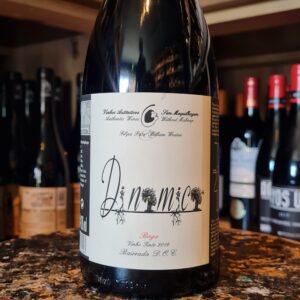 Filipa Pato is the confirmation of the old saying "son of fish knows how to swim". Although she followed the footsteps of her father Luís Pato, even in her academic training, Filipa always wanted to have her own world, her own project, where she would show her ideas, and go up with her own pulse. It was the 2001 harvest, a great year in Bairrada, which would provide all of this. That year, she decided to walk on her own feet, creating her dream. The success was immediate, and soon she rose to the status of one of the most brilliant winemakers in Portugal. The wines are the result of Filipa's innovative and brilliant spirit. They were quickly at the forefront of national and international criticism. In 2011, with her husband William Wouters, a prestigious Belgian Sommelier and owner of the Pazzo restaurant in Antwerp, Filipa receives the title "Newcomer of the year".
Filipa Pato is the confirmation of the old saying "son of fish knows how to swim". Although she followed the footsteps of her father Luís Pato, even in her academic training, Filipa always wanted to have her own world, her own project, where she would show her ideas, and go up with her own pulse. It was the 2001 harvest, a great year in Bairrada, which would provide all of this. That year, she decided to walk on her own feet, creating her dream. The success was immediate, and soon she rose to the status of one of the most brilliant winemakers in Portugal. The wines are the result of Filipa's innovative and brilliant spirit. They were quickly at the forefront of national and international criticism. In 2011, with her husband William Wouters, a prestigious Belgian Sommelier and owner of the Pazzo restaurant in Antwerp, Filipa receives the title "Newcomer of the year". -
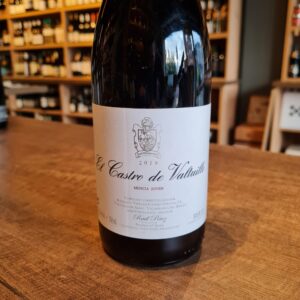 The Castro Ventosa estate was founded by the Perez family in 1752 and has been in the family ever since. They own 75 hectares of Mencía vines in Bierzo, making them the biggest owners of this varietal within the D.O Bierzo. For this wine, younger vines are used from 17 parcels across the Valtuille de Abajo village zone. Vines range from 20-40 years and viticulture is conventional, everything is done by hand and vines are not irrigated. Pair it with hard cheese, pasta, red meat, roasted vegetables.
The Castro Ventosa estate was founded by the Perez family in 1752 and has been in the family ever since. They own 75 hectares of Mencía vines in Bierzo, making them the biggest owners of this varietal within the D.O Bierzo. For this wine, younger vines are used from 17 parcels across the Valtuille de Abajo village zone. Vines range from 20-40 years and viticulture is conventional, everything is done by hand and vines are not irrigated. Pair it with hard cheese, pasta, red meat, roasted vegetables. -
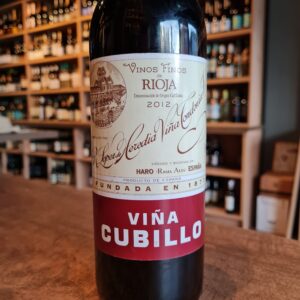 Viña Cubillo wines come from the vineyard called Viña Cubillas, some 4 km away from the bodega, which as with all of the other vineyards, was bought by our founder. Historically these wines were called "Special Harvest". For 143 years, four generations of the López de Heredia family have devoted themselves to producing exceptional and unique wines. Masterpieces which have achieved that which the founder of the company, Rafael López de Heredia y Landeta, defined in the late nineteenth century as the "Supreme Rioja". Vineyard care, a scrupulous selection of grapes, ageing in oak barrels in the heart of deep underground galleries, and the later ageing in bottles, all contribute to making these illustrious wines with their exceptional bouquet. Decant it for an hour if possible, It goes perfectly with all meat dishes, tapas and assorted antipasti, sausages, small game and wild mushrooms.
Viña Cubillo wines come from the vineyard called Viña Cubillas, some 4 km away from the bodega, which as with all of the other vineyards, was bought by our founder. Historically these wines were called "Special Harvest". For 143 years, four generations of the López de Heredia family have devoted themselves to producing exceptional and unique wines. Masterpieces which have achieved that which the founder of the company, Rafael López de Heredia y Landeta, defined in the late nineteenth century as the "Supreme Rioja". Vineyard care, a scrupulous selection of grapes, ageing in oak barrels in the heart of deep underground galleries, and the later ageing in bottles, all contribute to making these illustrious wines with their exceptional bouquet. Decant it for an hour if possible, It goes perfectly with all meat dishes, tapas and assorted antipasti, sausages, small game and wild mushrooms. -
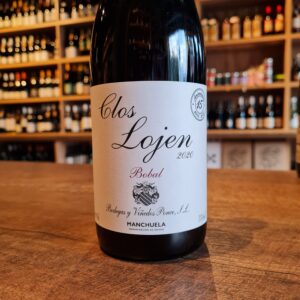 Manchuela is the spiritual home of the Bobal grape. Clos Lojen made by Bodega y Viñedos Ponce is a biodynamic and pure 100% Bobal from limestone soils, fermented in big oak casks. Bobal is the 2nd most planted red variety in Spain yet so little of it reaches the heights of which it’s undoubtedly capable. With a naturally deep colour, high levels of tannins, high acidity and an ability to be exciting as either a blending partner or a mono-varietal wine, momentum needs to be gained with Bobal, till then we seek winemakers that do exciting things and produce wines that are fun to drink. As per Juan Antonio Ponce own words “I want my wines to be bought by any ordinary person. We must be able to reach consumers in a straight-forward manner otherwise beer will cannibalize our markets.”
Manchuela is the spiritual home of the Bobal grape. Clos Lojen made by Bodega y Viñedos Ponce is a biodynamic and pure 100% Bobal from limestone soils, fermented in big oak casks. Bobal is the 2nd most planted red variety in Spain yet so little of it reaches the heights of which it’s undoubtedly capable. With a naturally deep colour, high levels of tannins, high acidity and an ability to be exciting as either a blending partner or a mono-varietal wine, momentum needs to be gained with Bobal, till then we seek winemakers that do exciting things and produce wines that are fun to drink. As per Juan Antonio Ponce own words “I want my wines to be bought by any ordinary person. We must be able to reach consumers in a straight-forward manner otherwise beer will cannibalize our markets.” -
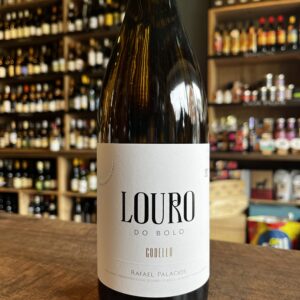 The best white wines of Spain are made of Godello from the region Valdeorras in Galicia. More and more this wine is can be seen in many wine lists across Ireland as its increasing popularity is par to the Albarino from Rias baixas or the Rueda's Verdejo. Rafael Palacios the maker of this wine comes from something of a winemaking dynasty. His father, uncle and brother are all highly regarded winemakers across Rioja, Priorat and other parts of the country. Rafael himself cut his teeth working on his father's Rioja estate, prior to training and working in Bordeaux and Coonawarra, South Australia. Rafa started this project in 2004 in the then little known region of Valdeorras, home of a few ancient plots of Godello vines. This grape variety was virtually extinct in Spain but Rafa and a few others realised its potential and extensive replanting of the variety began. The Louro is crafted from younger vines but is selected from plots that produce more age-worthy wines. Fermented with indigenous yeast and aged in used foudre, Louro showcases Rafa’s talent at balancing the minerality of the grape with the richness and texture of the élevage. Pair it with baked whitefish, bluefish, fish and vegetables, grilled fish, grilled whitefish, pasta with fish, poultry, rice with fish, roasted fish, roasted foods.
The best white wines of Spain are made of Godello from the region Valdeorras in Galicia. More and more this wine is can be seen in many wine lists across Ireland as its increasing popularity is par to the Albarino from Rias baixas or the Rueda's Verdejo. Rafael Palacios the maker of this wine comes from something of a winemaking dynasty. His father, uncle and brother are all highly regarded winemakers across Rioja, Priorat and other parts of the country. Rafael himself cut his teeth working on his father's Rioja estate, prior to training and working in Bordeaux and Coonawarra, South Australia. Rafa started this project in 2004 in the then little known region of Valdeorras, home of a few ancient plots of Godello vines. This grape variety was virtually extinct in Spain but Rafa and a few others realised its potential and extensive replanting of the variety began. The Louro is crafted from younger vines but is selected from plots that produce more age-worthy wines. Fermented with indigenous yeast and aged in used foudre, Louro showcases Rafa’s talent at balancing the minerality of the grape with the richness and texture of the élevage. Pair it with baked whitefish, bluefish, fish and vegetables, grilled fish, grilled whitefish, pasta with fish, poultry, rice with fish, roasted fish, roasted foods. -
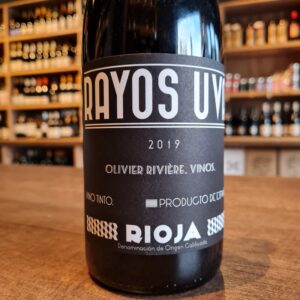 Olivier Riviere, founder and winemaker at Rayos Uva Rioja, is originally from Cognac. He studied in St-Emilion and then made wine in southern France and Burgundy before moving to Ribera del Duero in 2004, when he started leasing land and purchasing fruit for his new Spanish blends. Finally, in 2013, Olivier bought his first 3.5 acres in Rioja Alavesa; Rayos Uva is now in its sixth vintage. Olivier's holdings are substantially larger now, but he still sources fruit from his favorite bodegas. Grown by Bodegas Lacus where Olivier is also the winemaker, this 2021 is a blend of hand-harvested Tempranillo and Graciano that is semi-carbonically fermented in tanks with wild yeasts. Aged 10-12 months in tank and concrete foudre. An exciting Rioja with a French artisanal sensibility. Slightly filtered. It is recommended to open the bottle half an hour before consuming it to express the true potential.
Olivier Riviere, founder and winemaker at Rayos Uva Rioja, is originally from Cognac. He studied in St-Emilion and then made wine in southern France and Burgundy before moving to Ribera del Duero in 2004, when he started leasing land and purchasing fruit for his new Spanish blends. Finally, in 2013, Olivier bought his first 3.5 acres in Rioja Alavesa; Rayos Uva is now in its sixth vintage. Olivier's holdings are substantially larger now, but he still sources fruit from his favorite bodegas. Grown by Bodegas Lacus where Olivier is also the winemaker, this 2021 is a blend of hand-harvested Tempranillo and Graciano that is semi-carbonically fermented in tanks with wild yeasts. Aged 10-12 months in tank and concrete foudre. An exciting Rioja with a French artisanal sensibility. Slightly filtered. It is recommended to open the bottle half an hour before consuming it to express the true potential. -
Out of stock
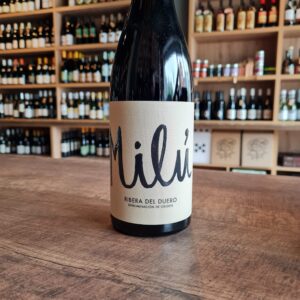 A rich and satisfying Ribera del Duero red, from a quality focussed micro producer Quinta Milú. This is a family run project in the Ribera del Duero from the Asturian viticulturist Germán R. Blanco. A small project which for nearly 10 years now has looked for wines which tell us about where they were born, a small village by the name of La Aguilera situated in the province of Burgos. Germán makes his elegant, fruit-forward wines using foot-treading, wild yeast fermentation and minimal handling. Not filtered, not clarified and not stabilized is his ethos. All his wines share a delicious rusticity, purity of fruit, and incredible freshness. Germán calls this— his flagship wine— a “vino de pueblo”, which translates as “a wine for every day and for everyone.” Pair it with braised meats, steak, game, lamb, root veggies, hard cheese or just have it on its own.
A rich and satisfying Ribera del Duero red, from a quality focussed micro producer Quinta Milú. This is a family run project in the Ribera del Duero from the Asturian viticulturist Germán R. Blanco. A small project which for nearly 10 years now has looked for wines which tell us about where they were born, a small village by the name of La Aguilera situated in the province of Burgos. Germán makes his elegant, fruit-forward wines using foot-treading, wild yeast fermentation and minimal handling. Not filtered, not clarified and not stabilized is his ethos. All his wines share a delicious rusticity, purity of fruit, and incredible freshness. Germán calls this— his flagship wine— a “vino de pueblo”, which translates as “a wine for every day and for everyone.” Pair it with braised meats, steak, game, lamb, root veggies, hard cheese or just have it on its own. -
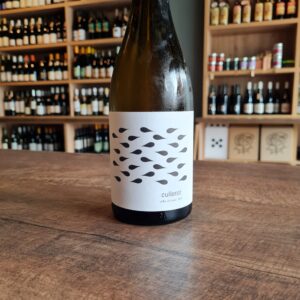 Celler del Roure is making very interesting wines with local grape varieties in the Valencia area. Many of these old, indigenous varieties are largely forgotten and Cullerot highlights three of them (Verdil, Tortosina, and Merseguera) together with Pedro Ximénez, Macabeo, Malvasía, and others. In addition to their focus on indigenous grape varieties, Celler del Roure is employing traditional vinifications methods: hand harvesting, fermenting with native yeasts in stone lagars, and aging in very old clay amphorae. Cullerot has a bit of skin contact, and is medium bodied with notes of stone fruit, tropical notes, apple skin, and clay-y minerality. A great, truly interesting, "almost-orange" skin contact white wine, for less than €20.
Celler del Roure is making very interesting wines with local grape varieties in the Valencia area. Many of these old, indigenous varieties are largely forgotten and Cullerot highlights three of them (Verdil, Tortosina, and Merseguera) together with Pedro Ximénez, Macabeo, Malvasía, and others. In addition to their focus on indigenous grape varieties, Celler del Roure is employing traditional vinifications methods: hand harvesting, fermenting with native yeasts in stone lagars, and aging in very old clay amphorae. Cullerot has a bit of skin contact, and is medium bodied with notes of stone fruit, tropical notes, apple skin, and clay-y minerality. A great, truly interesting, "almost-orange" skin contact white wine, for less than €20. -
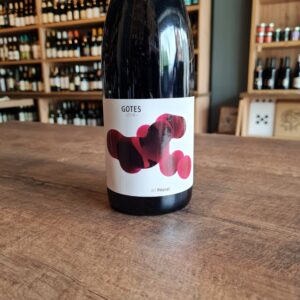 Gotes was the last to be incorporated into the Portal del Priorat's wine family, the Alfredo Arribas project in this denomination, and was envisioned to highlight the freshness of Priorat wines; gotes (drops) of freshness, like dewdrops. Don't expect to find in Gotes the more usual Priorat typicity, with profound maturity and intense minerality. Gotes reflects another type of Priorat wine, refined, in the French style (we mean 'French' as in Burgundy), with a fresh and floral profile. The typicity of Gotes is rooted in the countryside, in its notes of aromatic plants, and in that delightful warmth, because although fresh it is Mediterranean. Another special feature of Gotes is the polish and attention to detail it emits; it's an elegant wine; it has clearly been crafted by experts. If Gotes is refined on the nose, it's positively explosive on the palate! It grows and grows, with lots of volume and a very seductive sweetness and velvety texture. Gotes is fruit, but a very varied fruit cocktail: red fruits, black fruits, both fresh and jammy, the odd juicy stone fruit like mango (the Garnacha always leaves its mark) and fresh grapes that provide a citrusy touch. Ideal with dishes of a upper middle power taste. Will be excellent with a salad of figs and duck ham with Parmesan shavings. It will also be great taking with red meats, duck breast grilled or thigh kid with cider and soft alioli.
Gotes was the last to be incorporated into the Portal del Priorat's wine family, the Alfredo Arribas project in this denomination, and was envisioned to highlight the freshness of Priorat wines; gotes (drops) of freshness, like dewdrops. Don't expect to find in Gotes the more usual Priorat typicity, with profound maturity and intense minerality. Gotes reflects another type of Priorat wine, refined, in the French style (we mean 'French' as in Burgundy), with a fresh and floral profile. The typicity of Gotes is rooted in the countryside, in its notes of aromatic plants, and in that delightful warmth, because although fresh it is Mediterranean. Another special feature of Gotes is the polish and attention to detail it emits; it's an elegant wine; it has clearly been crafted by experts. If Gotes is refined on the nose, it's positively explosive on the palate! It grows and grows, with lots of volume and a very seductive sweetness and velvety texture. Gotes is fruit, but a very varied fruit cocktail: red fruits, black fruits, both fresh and jammy, the odd juicy stone fruit like mango (the Garnacha always leaves its mark) and fresh grapes that provide a citrusy touch. Ideal with dishes of a upper middle power taste. Will be excellent with a salad of figs and duck ham with Parmesan shavings. It will also be great taking with red meats, duck breast grilled or thigh kid with cider and soft alioli. -
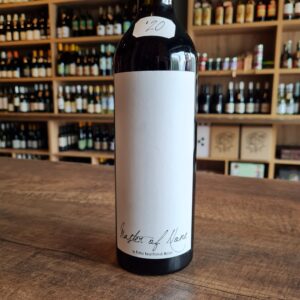 Master of none - Playing with words referring to themselves not being an expert in any one varietal or wine style hence the saying: “Jack of all trades, master of none”. Clever and humble, nonetheless, their wines are at the forefront not only of South Africa but in the world with the amazing wines they are producing. If you enjoy reds on the lighter end of the spectrum such as Pinot Noir or Gamay then Pieter's 'Master of None' will definitely be up your street! It comprises a blend of 5 different grape varieties from tiny vineyard plots across 6 distinct regions; 40% Grenache from Wellington, 30% Cinsault from sites in Darling and Stellenbosch, 8% Pinot Noir from Elgin and a further 8% Syrah from Swartland. Unusually, Pieter then tops up the blend with Voor Paardeberg Chenin Blanc, adding aromatic freshness to the finished wine. It drinks like a top-class Beaujolais – super bright and juicy, bursting with wild strawberry, cherry and with an earthy, smoky undercurrent. Enjoy at room temperature or slightly chilled – perfect for summer drinking! “In 2004, a lady came to my house to buy wine. She asked for anything but Shiraz. “I don’t drink Shiraz”, were her exact words. I poured her a glass of wine. She loved it and bought 3 cases. It was a straight Shiraz. It’s a fact – we do judge the book by its cover.”
Master of none - Playing with words referring to themselves not being an expert in any one varietal or wine style hence the saying: “Jack of all trades, master of none”. Clever and humble, nonetheless, their wines are at the forefront not only of South Africa but in the world with the amazing wines they are producing. If you enjoy reds on the lighter end of the spectrum such as Pinot Noir or Gamay then Pieter's 'Master of None' will definitely be up your street! It comprises a blend of 5 different grape varieties from tiny vineyard plots across 6 distinct regions; 40% Grenache from Wellington, 30% Cinsault from sites in Darling and Stellenbosch, 8% Pinot Noir from Elgin and a further 8% Syrah from Swartland. Unusually, Pieter then tops up the blend with Voor Paardeberg Chenin Blanc, adding aromatic freshness to the finished wine. It drinks like a top-class Beaujolais – super bright and juicy, bursting with wild strawberry, cherry and with an earthy, smoky undercurrent. Enjoy at room temperature or slightly chilled – perfect for summer drinking! “In 2004, a lady came to my house to buy wine. She asked for anything but Shiraz. “I don’t drink Shiraz”, were her exact words. I poured her a glass of wine. She loved it and bought 3 cases. It was a straight Shiraz. It’s a fact – we do judge the book by its cover.” -
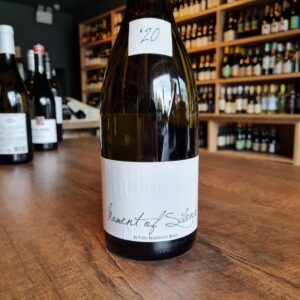 Moment of Silence is a South African wine made by superstar wine maker Pieter Walser. He buys in the fruit to make this blended wine of Viognier, Chenin Blanc and Chardonnay. It has been aged in old oak and it is a rich, powerful wine. Some of the fruit comes from vineyards which are over 50 years old.Stunning, all rounder, there is nothing you can fault in this wine. Aromas of candied lemon, cooked apple and mango with a core of minerality. Soft and voluptuous, it has a lovely ripeness and a fleshy, creamy mouthfeel, which leads to a perfect tangy freshness giving some zip to its otherwise mellow feel.
Moment of Silence is a South African wine made by superstar wine maker Pieter Walser. He buys in the fruit to make this blended wine of Viognier, Chenin Blanc and Chardonnay. It has been aged in old oak and it is a rich, powerful wine. Some of the fruit comes from vineyards which are over 50 years old.Stunning, all rounder, there is nothing you can fault in this wine. Aromas of candied lemon, cooked apple and mango with a core of minerality. Soft and voluptuous, it has a lovely ripeness and a fleshy, creamy mouthfeel, which leads to a perfect tangy freshness giving some zip to its otherwise mellow feel. -
Out of stock
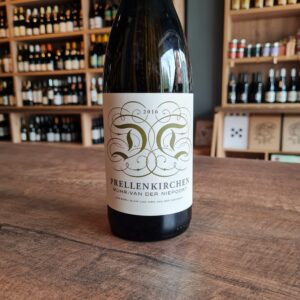 The exciting Muhr-Van der Niepoort project began in 2002 as a collaboration between Austrian PR guru Dorli Muhr and celebrated Portuguese winemaker Dirk Niepoort. Although the name is taken from the village of Prellenkirschen, all of the grapes for the white are sourced from the Spitzerberg, or a continuation of it. A blend of 90% Gruner Veltliner (35 year old vines) and 10% Riesling (planted in 1950), the grapes see some skin contact in the fermentation, imbuing the final wine with tension and extract, a mouth-watering savoury salinity and clearly-delineated spicy flavours of white pepper, fennel and cumin. Deep and a touch wild on the palate but with enormous personality and interest, its deep savoury style will appeal to lovers of edgy yet serious food-friendly whites.
The exciting Muhr-Van der Niepoort project began in 2002 as a collaboration between Austrian PR guru Dorli Muhr and celebrated Portuguese winemaker Dirk Niepoort. Although the name is taken from the village of Prellenkirschen, all of the grapes for the white are sourced from the Spitzerberg, or a continuation of it. A blend of 90% Gruner Veltliner (35 year old vines) and 10% Riesling (planted in 1950), the grapes see some skin contact in the fermentation, imbuing the final wine with tension and extract, a mouth-watering savoury salinity and clearly-delineated spicy flavours of white pepper, fennel and cumin. Deep and a touch wild on the palate but with enormous personality and interest, its deep savoury style will appeal to lovers of edgy yet serious food-friendly whites. -
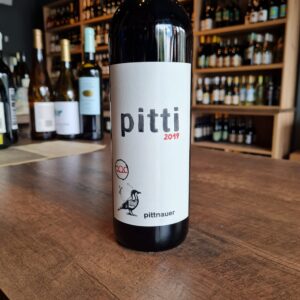 High on the hills of Austria there is more than just a lonely goat herd - there is also a fantastic winery, considered one of the country's best. Pittnauer has a long winemaking tradition in the region, and in 2006 moved to more biodynamic practices. The results are delicious, environmentally friendly wines with years of experience behind them. Now prepare yourself for some varieties you've probably never heard of - Pittnauer's Pitti Red Blend is made from blaufränkisch and Zweigelt grapes with a small quantity of Merlot added to the mixture. These varieties shine brightest in the Austrian climate, where they come together to make a stunningly delicious, full bodied wine reminiscent of spicy Shiraz. The ‘Pitti’ is a blend coming from vines that average 12-15 years in age and are planted on sandy clay mixed with limestone. Dark ruby in colour, the wine has tight tannins with black berries, cherries, cranberries and fresh acidic structure. Whispers of tobacco and liquorice. Ticks all the boxes of quality, drinkability and affordability and yumability.
High on the hills of Austria there is more than just a lonely goat herd - there is also a fantastic winery, considered one of the country's best. Pittnauer has a long winemaking tradition in the region, and in 2006 moved to more biodynamic practices. The results are delicious, environmentally friendly wines with years of experience behind them. Now prepare yourself for some varieties you've probably never heard of - Pittnauer's Pitti Red Blend is made from blaufränkisch and Zweigelt grapes with a small quantity of Merlot added to the mixture. These varieties shine brightest in the Austrian climate, where they come together to make a stunningly delicious, full bodied wine reminiscent of spicy Shiraz. The ‘Pitti’ is a blend coming from vines that average 12-15 years in age and are planted on sandy clay mixed with limestone. Dark ruby in colour, the wine has tight tannins with black berries, cherries, cranberries and fresh acidic structure. Whispers of tobacco and liquorice. Ticks all the boxes of quality, drinkability and affordability and yumability. -
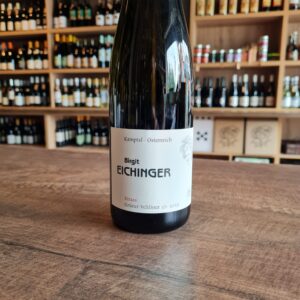 Weingut Birgit Eichinger was founded in 1992 by Birgit Eichinger and her husband Christian, who started out with roughly nine acres of vineyards shed from her parents' business, over time the vineyard area was expanded to 23 acres in the best traditional sites of Strass. This is a single-vineyard Grüner, from a vineyard whose loess (loose and sandy) soils and southward face are perfect for the cultivation of traditional Kamptal-style Grüner. The Birgit Eichinger Grüner Veltliner Strass Kamptal impresses with its elegantly dry taste. It was put on the bottle with only 1.8 grams of residual sugar. As one can of course expect with a wine, this Austrian naturally enchants with the finest balance in all dryness. Taste doesn't necessarily need sugar. On the palate, the texture of this light-footed white wine is wonderfully light. Due to the balanced fruit acidity, the Grüner Veltliner Rhinestone Kamptal flatters with velvety mouthfeel, without missing out on juicy liveliness. The finish comes with mineral notes of the soils dominated by loess soil and sandstone.
Weingut Birgit Eichinger was founded in 1992 by Birgit Eichinger and her husband Christian, who started out with roughly nine acres of vineyards shed from her parents' business, over time the vineyard area was expanded to 23 acres in the best traditional sites of Strass. This is a single-vineyard Grüner, from a vineyard whose loess (loose and sandy) soils and southward face are perfect for the cultivation of traditional Kamptal-style Grüner. The Birgit Eichinger Grüner Veltliner Strass Kamptal impresses with its elegantly dry taste. It was put on the bottle with only 1.8 grams of residual sugar. As one can of course expect with a wine, this Austrian naturally enchants with the finest balance in all dryness. Taste doesn't necessarily need sugar. On the palate, the texture of this light-footed white wine is wonderfully light. Due to the balanced fruit acidity, the Grüner Veltliner Rhinestone Kamptal flatters with velvety mouthfeel, without missing out on juicy liveliness. The finish comes with mineral notes of the soils dominated by loess soil and sandstone.


